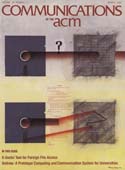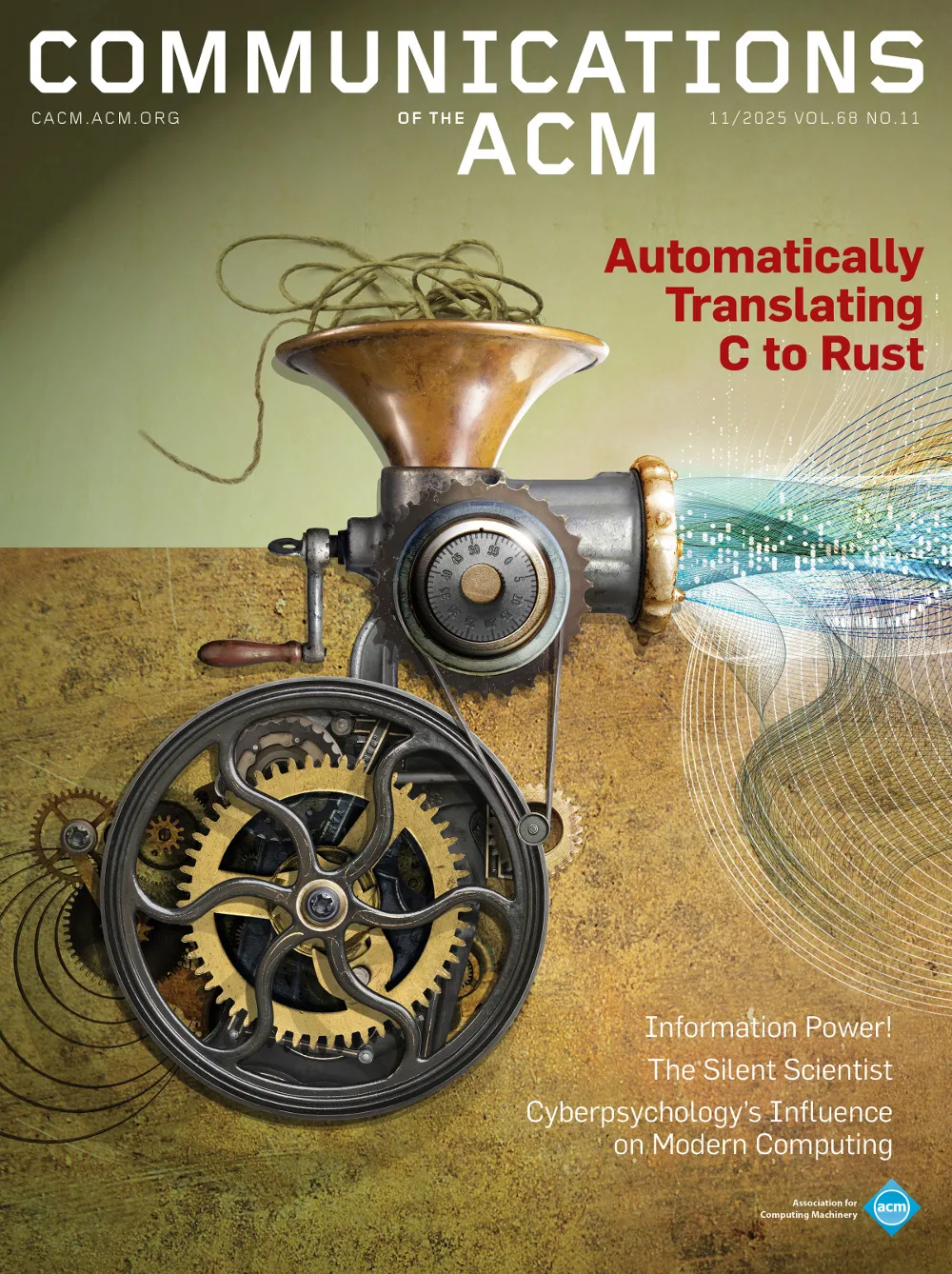March 1986 - Vol. 29 No. 3

Features
Andrew: a distributed personal computing environment
The Information Technology Center (ITC), a collaborative effort between IBM and Carnegie-Mellon University, is in the process of creating Andrew, a prototype computing and communication system for universities. This article traces the origins of Andrew, discusses its goals and strategies, and gives an overview of the current status of its implementation and usage.
A model curriculum for a liberal arts degree in computer science
This report proposes developing a rigorous undergraduate curriculum for a B.A.-degree program in computer science. The curriculum is intended as a model not only for high-quality undergraduate colleges and universities, but also for larger universities with strong computer science programs in a liberal arts setting.
The relationship between benchmark tests and microcomputer price
A highly accurate model predicts microcomputer price based on benchmark performance by analyzing the impact on predicted price of fluctuations in system configuration and benchmark results.
How not to lie with statistics: the correct way to summarize benchmark results
Using the arithmetic mean to summarize normalized benchmark results leads to mistaken conclusions that can be avoided by using the preferred method: the geometric mean.
The structure of microcomputer file systems
With an understanding of the structure of microcomputer file systems and what causes incompatibilities between them, it is possible to write software that will enable one system to read files written by another—provided they have physically compatible hardware.
An empirical study of the impact of user involvement on system usage and information satisfaction
"User involvement" in information system development is generally considered an important mechanism for improving system quality and ensuring successful system implementation. The common assumption that user involvement leads to system usage and/or information satisfaction is examined in a survey of 200 production managers. Alternative models exploring the causal ordering of the three variables are developed and tested via path analysis. The results demonstrate that user involvement in the development of information systems will enhance both system usage and the user's satisfaction with the system. Further, the study provides evidence that the user's satisfaction with the system will lead to greater system usage.
A comment on “a fast parallel algorithm for thinning digital patterns”
A fast parallel thinning algorithm for digital patterns is presented. This algorithm is an improved version of the algorithms introduced by Zhang and Suen [5] and Stefanelli and Rosenfeld [3]. An experiment using an Apple II and an Epson printer was conducted. The results show that the improved algorithm overcomes some of the disadvantages found in [5] by preserving necessary and essential structures for certain patterns which should not be deleted and maintains very fast speed, from about 1.5 to 2.3 times faster than the four-step and two-step methods described in [3] although the resulting skeletons look basically the same.



